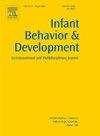在印度,照顾者与婴儿的互动在自闭症的高家族可能性的婴儿
IF 1.9
3区 心理学
Q3 PSYCHOLOGY, DEVELOPMENTAL
引用次数: 0
摘要
对自闭症高可能性婴儿(EL-A)的前瞻性研究已经确定了与典型可能性婴儿(TL)相比,照顾者-婴儿互动(CII)的差异。这些差异在婴儿一岁之前就开始出现,并可能影响促进社交发展所必需的社交机会。据我们所知,迄今为止所有的研究都集中在西方样本(澳大利亚、欧洲和美国)。然而,育儿科学早就认识到CII的文化差异。本研究调查了印度EL-A和TL婴儿CII的整体特征是否存在差异。采用曼彻斯特亲子互动评估(MACI)对33名EL-A和15名TL 9-15月龄婴儿进行了亲子自由游戏视频评分。在年龄控制分析中,EL-A婴儿比TL婴儿接受更低的敏感反应和心理刺激。在照顾者指向性、婴儿MACI量表和双元MACI量表上没有发现显著的组间差异。此外,照顾者敏感反应和心理刺激(包括社会和认知刺激)与父母同时报告的婴儿玩耍和休闲呈正相关,为生态效度提供了支持。在南亚背景下的第一项研究证明了先前CII研究的部分重复。建议印度家庭针对照顾者-婴儿互动进行早期先发制人的干预,以提高婴儿接触反应性和刺激性的社会互动。在使用照顾者自我记录的CII、样本量和广泛的年龄范围的背景下,研究结果的强度得到了理解。本文章由计算机程序翻译,如有差异,请以英文原文为准。
Caregiver-infant interactions in infants at elevated familial likelihood for autism in India
Prospective studies of infants at elevated likelihood for autism (EL-A) have identified differences in caregiver–infant interactions (CII) when compared to infants at typical likelihood (TL). These differences begin to emerge prior to the infant’s first birthday and may impact social opportunities essential for facilitating social-communicative development. To our knowledge, all studies to date have focused on Western samples (Australian, European, and US). However, parenting science has long recognised cultural variability in CII. This study investigated whether global features of CII differed between EL-A and TL infants in India. Caregiver-infant free-play videos involving 33 EL-A and 15 TL infants aged 9–15 months were rated using the Manchester Assessment of Caregiver-Child Interaction–Infant (MACI). EL-A infants received lower sensitive responsiveness and psychological stimulation compared to TL infants in age-controlled analyses. No significant group differences were found in caregiver directiveness or in infant or dyadic MACI scales. Furthermore, caregiver sensitive responsiveness and psychological stimulation (incorporating social and cognitive stimulation) were positively associated with concurrent parent-reported infant play and leisure, lending support for ecological validity. This first study in a South Asian context demonstrates a partial replication of previous CII studies. Early pre-emptive interventions targeting caregiver-infant interaction are recommended for Indian families to enhance infant exposure to responsive and stimulating social interactions. The strength of findings is understood in the context of utilising caregiver self-recorded CII, the sample size and broad age range.
求助全文
通过发布文献求助,成功后即可免费获取论文全文。
去求助
来源期刊

Infant Behavior & Development
PSYCHOLOGY, DEVELOPMENTAL-
CiteScore
4.10
自引率
4.80%
发文量
94
期刊介绍:
Infant Behavior & Development publishes empirical (fundamental and clinical), theoretical, methodological and review papers. Brief reports dealing with behavioral development during infancy (up to 3 years) will also be considered. Papers of an inter- and multidisciplinary nature, for example neuroscience, non-linear dynamics and modelling approaches, are particularly encouraged. Areas covered by the journal include cognitive development, emotional development, perception, perception-action coupling, motor development and socialisation.
 求助内容:
求助内容: 应助结果提醒方式:
应助结果提醒方式:


